
The year 2015 was a momentous one for the pollinators when Biodiversity Ireland brought together a diverse range of people to begin a plan of action they hope will save these important insects. Sixty eight organisations from across the island, including the Community Garden Network who I represented, agreed they would help to carry out five plans of action over the coming years in a 2015-2020 Pollinator Plan.
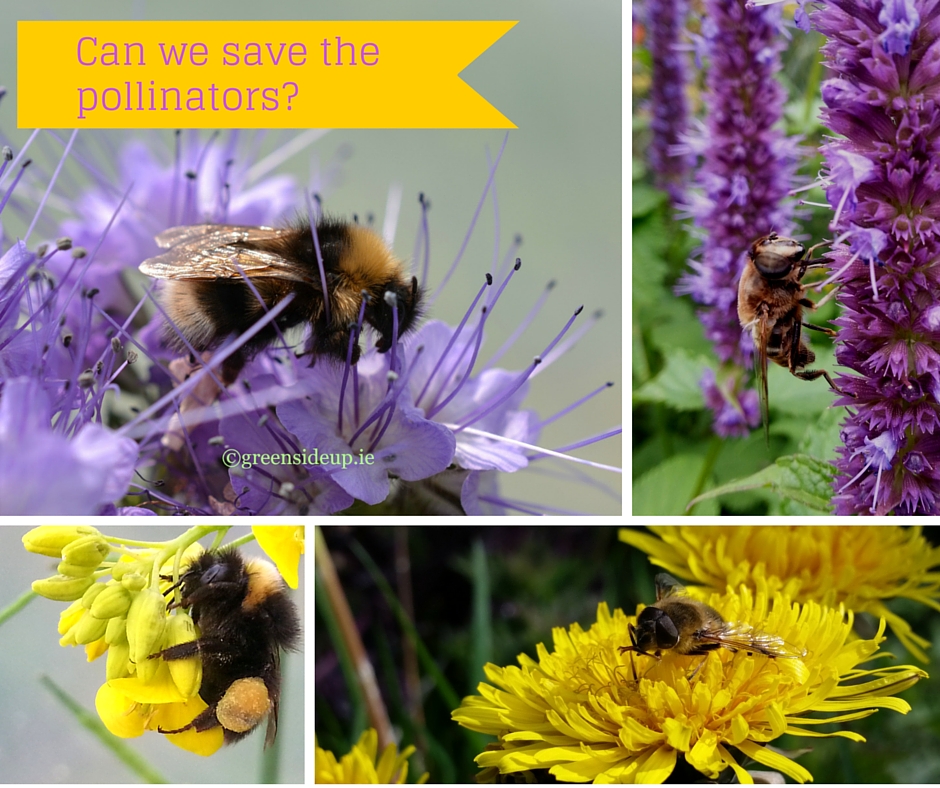
During the past thirty years, more than half of the bee species in Ireland have declined substantially, with 30% now threatened with extinction. It’s clear that this can’t continue and as many of the reasons for the decline are man-made, it’s not before time that we attempt to reverse the trend.
The five main actions highlighted in the Pollinator Plan include:
- Making Ireland and Northern Ireland pollinator friendly by focusing on actions that can be taken privately and publicly.
- Raising awareness of pollinators and how to protect them.
- Supporting beekeepers and growers.
- Expanding our knowledge on pollinators and pollination service.
- Collecting evidence to track change and measure success.
Upon launch, the Plan was picked up by media around the country but as we head into the new year, and with it thoughts of abundant summer gardens, it’s important we don’t forget to include these important little creatures in our planting schemes.
Pollinating our flowers, fruit and vegetables
Several fruit and veg varieties grown in Ireland depend upon pollinators including apples, blackcurrants, pumpkins and squashes, strawberries, blueberries, raspberries and blackberries.
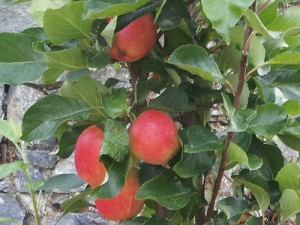
It’s also *been shown that animal pollinated crops are able to provide vitamins, antioxidants and other essential nutrients to the human diet as well as improve the nutritional value of some crops. Apart from the fact is seems morally wrong to do nothing, for nutritional reasons hand pollination should only be considered as a last resort.
Food crops aside, pollinators are important in our floral world too. It’s been estimated that 78% of flowering plants need animal pollination – what a bare island we’d live on without the bees and hoverflies!
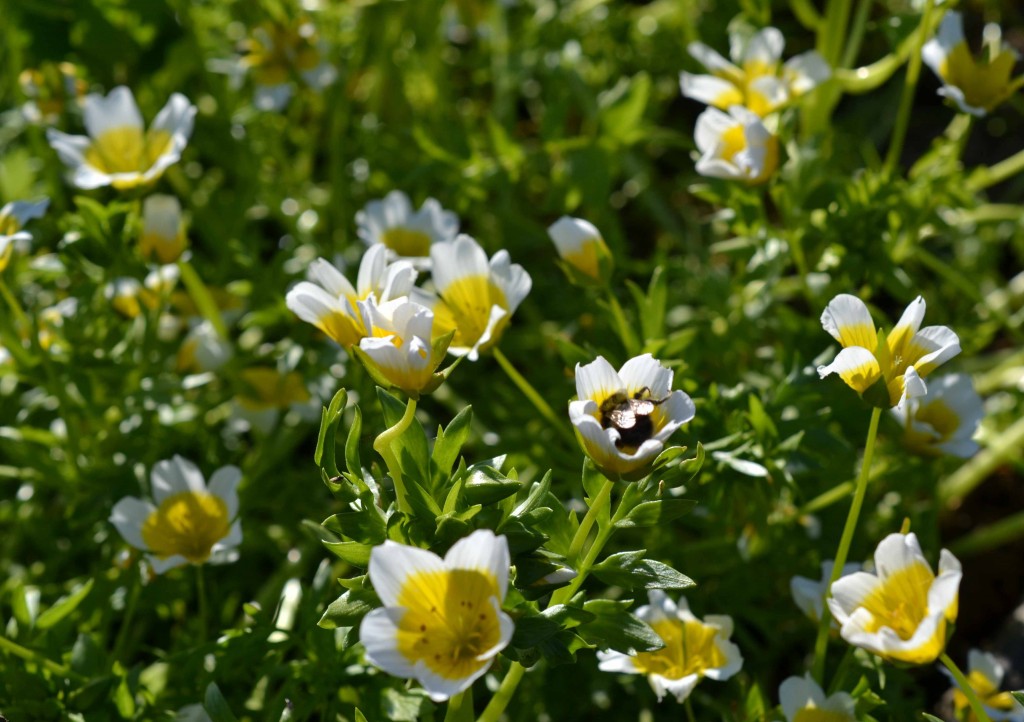
Limnanthes – Beloved by pollinators, also attract hoverflies whose larvae eat aphids
Pollinators fight our pest problems
Some pollinators such as hoverflies (of which there are 180 species in Ireland) don’t just pollinate plants, they help organic growers fight pests too. Hoverfly larvae feast on aphids so planting flowers around our gardens such as Limnanthes that attract them, helps to keep aphid numbers down and cut the need for spraying.
How Can We Help Pollinators?
There are several things we can do to help pollinators; choosing just one or two would be a great start for the year.
No 1. Stop using chemicals
I’ve written several articles on ways we can avoid using chemicals and sprays in the garden. Perhaps 2016 will be the year that the tide turns and people stop using them.
There are all sorts of pressures on Ireland’s pollinators that include loss of habitat, hunger, sickness, changing environments; however, poisoning is another and it’s preventable. Avoiding the use of neonicotinoids as well as herbicides that kill essential food sources for pollinators would help to see an improvement in numbers.
This article gives 16 natural alternatives to herbicide and pesticide use that you might find helpful to make the switch.
No 2. Allow ‘weeds’ to flower
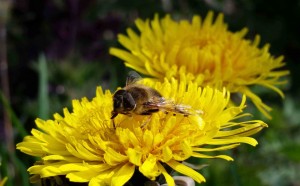
We have to think differently. Perfectly pruned gardens and lawns aren’t places that pollinators want to hang out; they belong in the past during a time we didn’t know any better. According to Biodiversity Ireland:
“Evidence from the USA showed that dandelions and white clover on lawns supported 37 species of bee. White clover was important for bumblebees and honeybees, whereas solitary bees, honey bees and hoverflies predominated on dandelion“.
From our own point of view as novice beekeepers, we’ve learnt that dandelions are one of the first ‘weeds’ that honey bees feed on when they come out of spring hibernation.
No 3. Plant more bee-friendly flowers and plants
Pollinators don’t differentiate between ornamental, hedgerow or wild flowers; they’re all food sources.
The following is a monthly flowering calendar of plants that bees enjoy, some of which you might like to include in your garden planting schemes this year. You can also find more detailed information about planting for pollinators in an article I wrote in March 2015.

The Bumblebee Conservation Trust have a useful online tool that can help you find what flowers in your garden are bee friendly and make suggestions to help you choose more.
No.4 Build a Bug Hotel
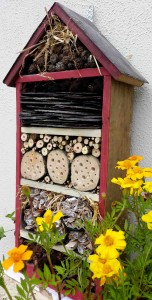
Over 80% of Ireland’s solitary bees are mining bees who nest in bare ground or south-facing slopes but the remaining 20% look for cavities to nest in. Whilst not a large number, building a bug hotel for solitary bees is a cool project to do with kids or groups and will enhance your garden too.
Here’s an example of one I made with a group of intellectually disabled adults last year.
No. 5 Submit Records and Learn about Pollinators
Biodiversity Ireland are building a database of pollinators in Ireland and Northern Ireland that will help to give a clear picture of the changes in populations and to help to track changes in wild pollinators.
They are encouraging as many people as they can to get involved to count and identify the bees. Records can be submitted via an online recording card, excel spreadsheet or by usingAndroid and iPhone apps and there’s lots of help available on their website to aid identification.

More Information
The Pollinator Plan includes other suggestions for improving the habitats of pollinators such as planting wildflowers along roadside verges, allowing field verges to grow wild and planting wildflower patches. The full document is available here in PDF format. Hardback copies are available from Biodiversity Ireland upon application.
Will you help? What’s the first thing you’ll do or change to help the pollinators? If your group or club would like to learn more about pollinators, contact me for information about talks.
*all facts given are courtesy of Biodiversity Ireland.
Source: Greenside Up – Can We Save the Pollinators of Ireland?





